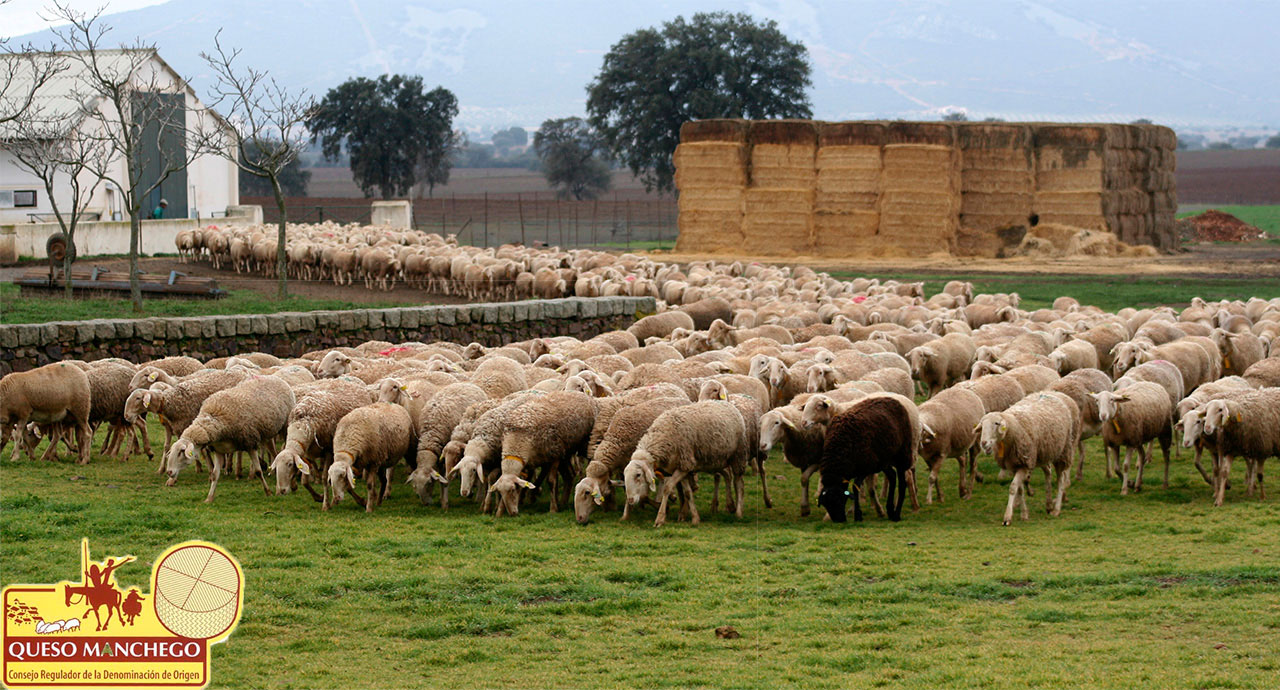La Tradicion' HM Manchego bears the obligatory Denomination of Origin label. Artesano for 6 months. Elaborated from ewe's milk in the heart of La Mancha region of Spain. Hand made sheep's milk cheese in artisan style. Firmer in texture and much tangier, with a fuller, richer flavour and a more pronounced, spicy aroma.
QUESOS ARTESANOS HECHOS A MANO, S.L. MORA (TOLEDO) Quesos HM has been producing cheese for three generations. Located in the area of "la Mancha" in Spain, in the province of Toledo.



History
Manchego derives its name from the central Spanish region of La Mancha, which was also the home of the legendary Don Quixote. Manchego has a distinctive flavour and an equally distinctive look. It can be recognized by a unique, zigzag or crosshatch pattern in its black-gray or buff-coloured rind (created by the rippled surface of the press used to make it). The rind itself is inedible. Inside, you’ll discover an ivory-colored interior and several small holes. It has an intense, zesty taste and a crumbly texture that's rich, full and slightly salty at the finish.
True Manchego cheese is produced only from the milk of the Manchega sheep. (Other Spanish ewe-milk cheese is commonly referred to as Manchego-style). The Manchega sheep graze mostly on dry pasture, fallow land and stubbly brush fields on a high plateau outside of the cities of Toledo, Albacete, and Cuenca in a region southeast of Madrid. The somewhat harsh grazing conditions in the region might be expected to yield low-fat milk from which the cheese is manufactured. In fact, the opposite is true. Manchego actually has a fat content of as high as 57 percent, which explains its rich, intoxicating taste.
The cheese is subjected to a rigorous and detailed production process, with the base milk having a 6 percent fat minimum and the aging process limited to fresh areas with a humidity of between 75 and 85percent. Manchego typically is produced in a cylindrical shape with each cheese weighing between 2.5 to 3.5 Kg.
Tasting Notes & Interesting Facts



Milk: Ewe's Milk
Characteristics: Mild, nutty flavour. Hard, compact texture
Uses: Stand alone with bread. Or serve solo as a snack or with fruit for dessert.
Not surprisingly, Spain's most famous and greatest cheese enjoys not only a rich taste, but a rich history that is traced all the way back to ancient times. The La Mancha plains in southern and central Spain were a focus of dispute for centuries between Northern Christians and Southern Muslims, who fought for control of its pastures. Historians of early Rome chronicled the area for its livestock farming. The Muslims that inhabited the land from the 8ththrough the 11th centuries dubbed it "Manya," which meant "land without water." Eventually, that would translate into "Mancha," the name that is used today.
King Alfonso VI conquered and united the region in the 12th century and forced the Muslim inhabitants to retreat out to the Andalucía region of modern day Spain. The resultant lack of political stability led, by the end of the century, to the organization of the area's stock farmers into cooperatives, which in turn helped bring stronger identity and political and economic power to the region’s agricultural inhabitants. By the 1600s, farming had advanced, but efficient use of pastureland led to the decline of stock-farming and the rise of land farming. By the mid-1800s, wool production (once a staple of the region) was in decline, and the production of meat and cheese moved to the forefront of the local economy.
By the beginning of the 1900s, the initial studies about Manchego cheese were written and local farms focused more on cheese production. As cheese production steadily grew, La Mancha evolved into a cheese powerhouse with production techniques tied to the local Manchega sheep herds. The result is the delicious and unique cheese that is being made available to you today.